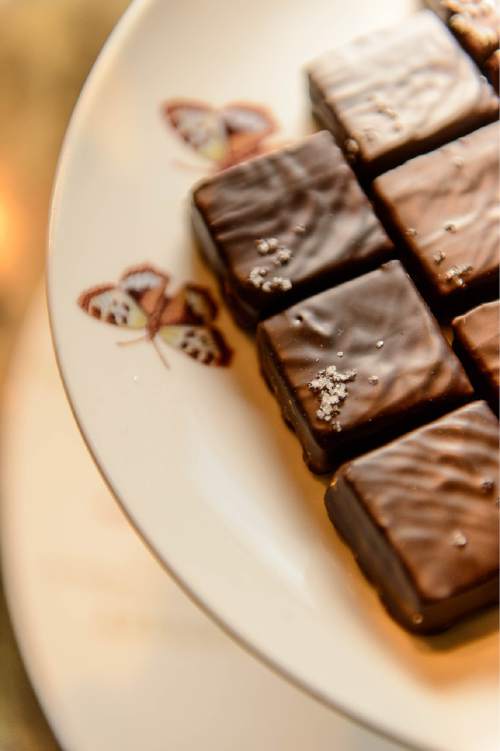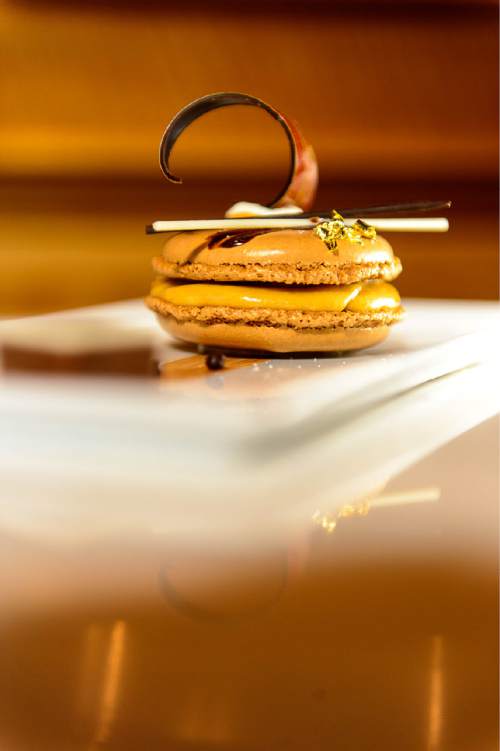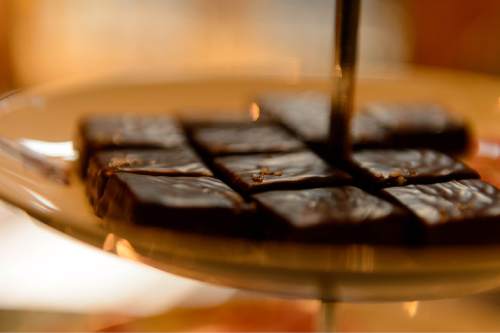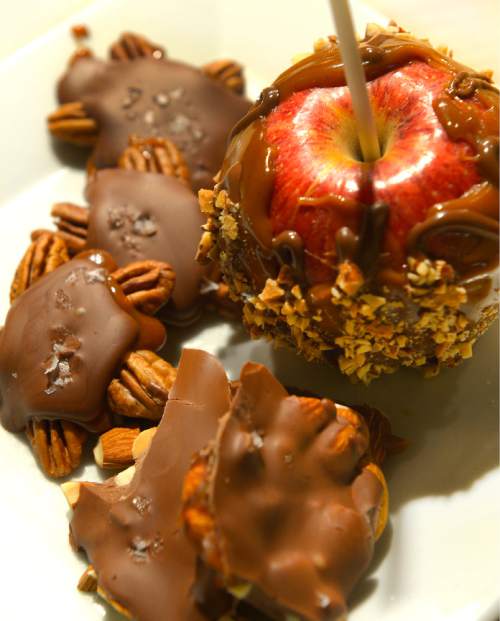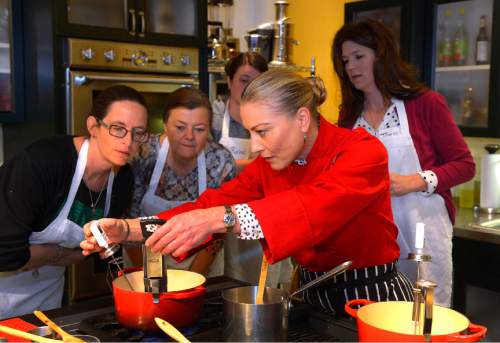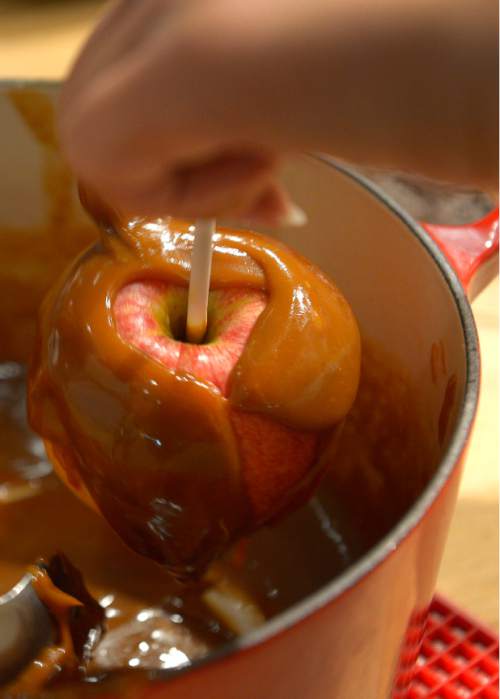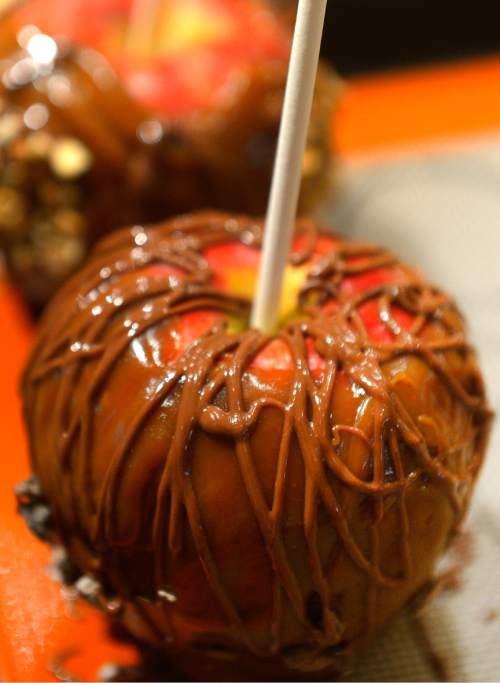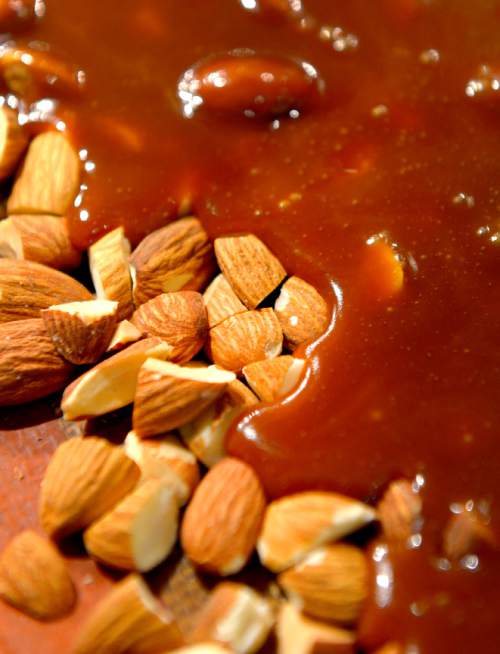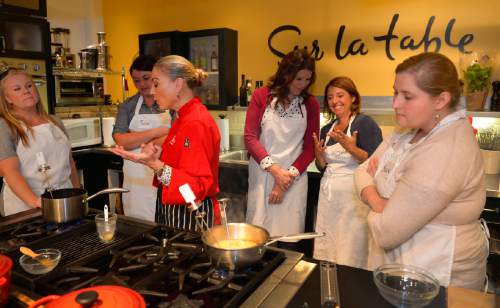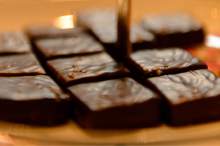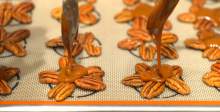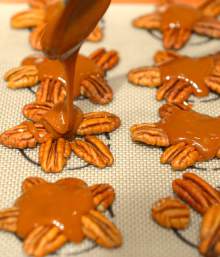This is an archived article that was published on sltrib.com in 2015, and information in the article may be outdated. It is provided only for personal research purposes and may not be reprinted.
The contrasting flavors of sweet and salty have always been alluring, from the roasted peanuts and molasses in Cracker Jacks to french fries dipped in a chocolate shake.
But it's the dynamic duo of sweet caramel and gourmet salt that has taken over as one of today's favorite flavors. It's especially popular for Halloween and the upcoming holidays despite the stiff competition from the pumpkin-spice craze.
From highbrow bakeries and candy shops to neighborhood grocery stores and even fast-food outlets, there's a salted-caramel something, whether it's ice cream, cookies, truffles or even hot chocolate.
"You can't go anywhere without seeing it," said Fernando Soberanis, the executive chef at the Grand America Hotel, where salted caramel shows up in several items, sweet and savory. In the hotel's French-inspired La Bonne Vie bakery, there are salted-caramel macarons and salted-caramel gelato, both top sellers. At banquets, guests may start dinner with a frisee and poached pear salad, garnished with salted caramel and pistachios, and end their meal with a salted-caramel éclair.
"Very few guests will not like the flavor," Soberanis said.
There is science behind its universal appeal, says Rebecca Millican, the pastry chef at Sandy's La Caille restaurant, who taught 19 years at The Institute of Culinary Education in New York. "The tastebuds that sense sweet and salty are on different areas of the tongue," she explained; as the first bite of sweetness dissipates, the salt flavor appears, offering a longer taste experience.
Adding to that is the complexity of caramel: a simple mixture of sugar, water and corn syrup. "When the sugars and amino acids come in contact with heat, they break down and change and that's where you get beautiful, complex flavor," she said.
Add salt, a well-known flavor enhancer, and it "makes it zing."
Salted caramel has its origins in Brittany, France, which is known for its creamy, high-quality salted butter. It's a legacy that started centuries ago when a national salt tax was implemented in France. Salt became a luxury that only the wealthy could afford, so unsalted butter quickly became what most cooks used, except in a few areas — including Brittany — that the royals made exempt.
Fast forward to the 1970s when a master chocolatier, Henri Le Roux, of Brittany, was trying to differentiate himself from his competitors and, after months of testing, came up with a salted butter caramel with crushed nuts. It was a success, and in 1980 it was awarded the best candy in France, according to his company website, http://www.chocolatleroux.eu.
The salted-caramel idea caught on in other parts of Europe and then made its way to high-end restaurants in the U.S. It was showcased in magazines, specialty food shops and high-end magazines until finally it hit the mainstream, showing up in Starbucks hot chocolate, Haagen-Dazs ice cream and Walmart's boxed truffles.
Salted caramel's rise in popularity parallels a growing interest in natural salts from around the world, Page Ane Viehweg, the chef at Sur la Table, told participants in a recent caramel-making workshop at the Salt Lake City store. Finishing salts like fleur de sel and Maldon flake salt from France, along with pink Himalayan salt, are used more widely, as cooks realize how a sprinkle of these minerals can enhance everything from a salad to a caramel turtle, one of the treats students learned to make in the class.
Viehweg predicted the salted caramel trend has staying power.
"It won't go out of style," she said. "Like many things in cooking, it may start as a trend, but it quickly becomes the new rule."
Salted caramel chocolate bark
2 cups toasted almonds, coarsely chopped
1 cup (8 ounces) unsalted butter, cubed
1 ½ cups granulated sugar
3 tablespoons light corn syrup
3 tablespoons water
3 teaspoons flaky sea salt, divided
1 cup chocolate, melted
Special equipment
Candy thermometer
Pastry brush
Line a rimed baking sheet with a silicone baking mat. Spread almonds evenly on the mat.
In a large, heavy-bottomed saucepan, add butter, sugar, corn syrup, water and 1 ½ teaspoons salt. Cook over medium heat, stirring until the mixture is melted and smooth and starting to boil. Stop stirring.
Wet a pastry brush with water and brush down any sugar crystals clinging to the side of the saucepan.
Clamp a candy thermometer to the side of the saucepan. Do not stir the mixture as it cooks, but watch the candy thermometer carefully. Once the temperature of the caramel reaches 300 degrees, hard crack stage, remove the pan from the heat. Pour the hot caramel evenly over the almonds on the prepared pan.
Let the caramel cool to room temperature. Spread melted chocolate evenly over the hardened surface using an offset spatula. Sprinkle with remaining 1 ½ teaspoons salt, or more to taste. Cool completely at room temperature or in the refrigerator. When set, cut or break bark into pieces and store in an airtight container.
The bark will keep for up to 10 days at room temperature or it can be wrapped well and frozen for about a month.
Servings • Makes 2 pounds
Source: Sur La Table
—
Salted butter caramel
1 cup heavy whipping cream
4 tablespoons unsalted butter, cut into pieces
1 teaspoon high-quality salt, such as fleur de sel
1 ¼ cups granulated sugar
¼ cup light corn syrup
¼ cup water
Special equipment
Candy thermometer
In a small saucepan add cream, butter and salt. Bring just to simmer, stirring to combine over medium-high heat. Remove from heat and set aside.
In a medium saucepan bring sugar, corn syrup and water to a boil, stirring just until the sugar is dissolved. Continue boiling, without stirring, until the mixture is a rich amber color and reaches 300 degrees on a candy thermometer. Remove the caramel from the heat and carefully stir in the cream mixture. The caramel will bubble, so be careful. Stir with a whisk to blend. If any bits of caramel have solidified, set the pan back over low heat and stir gently until it melts.
Use for dipping apples or pecan turtles. It also can be used to make hand-wrapped caramels. Line a baking sheet with buttered parchment paper. Pour caramel onto paper and cool for two hours. Cut into pieces and wrap in parchment.
Servings • 2 cups
Source: Sur La Table




